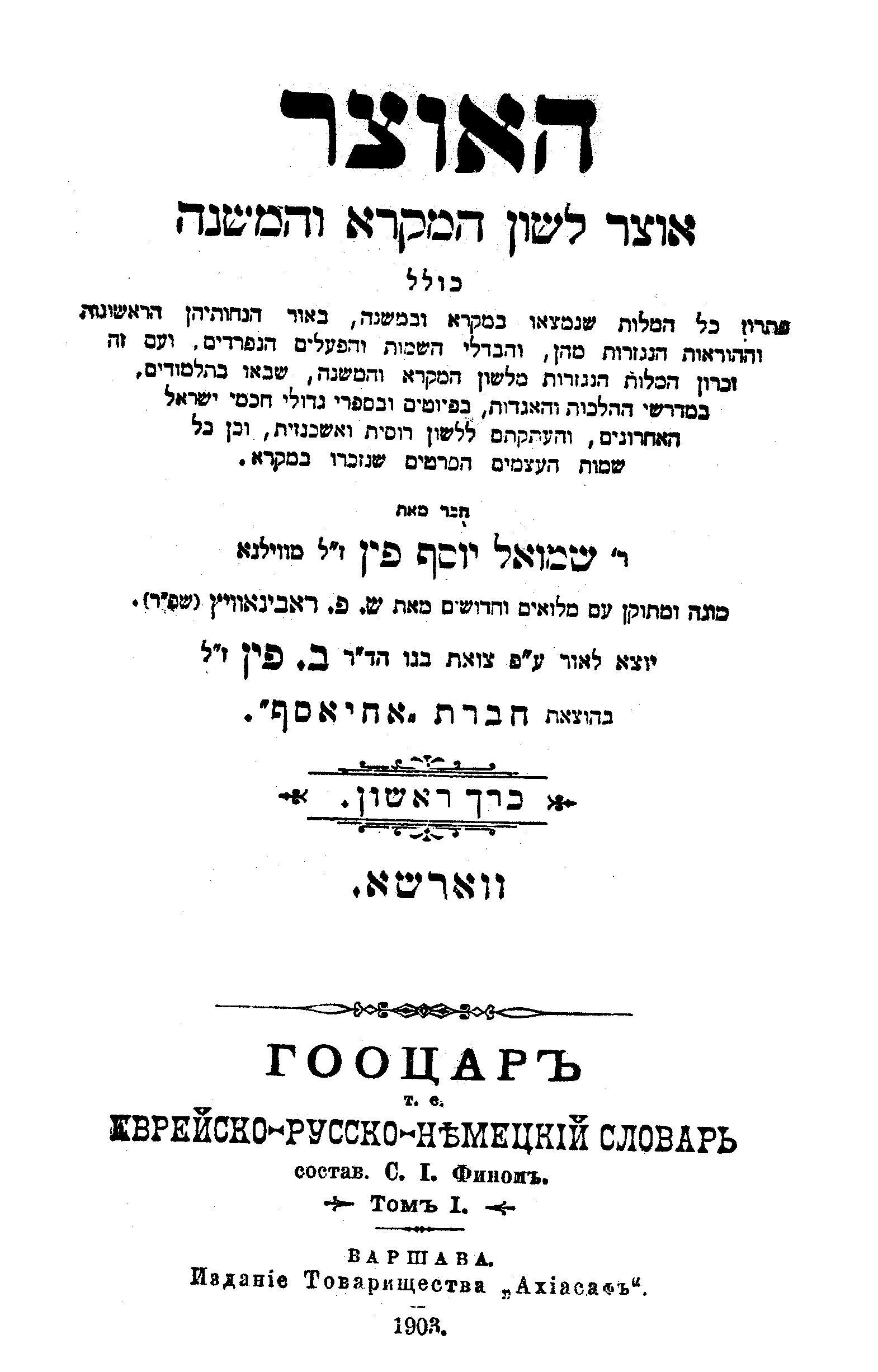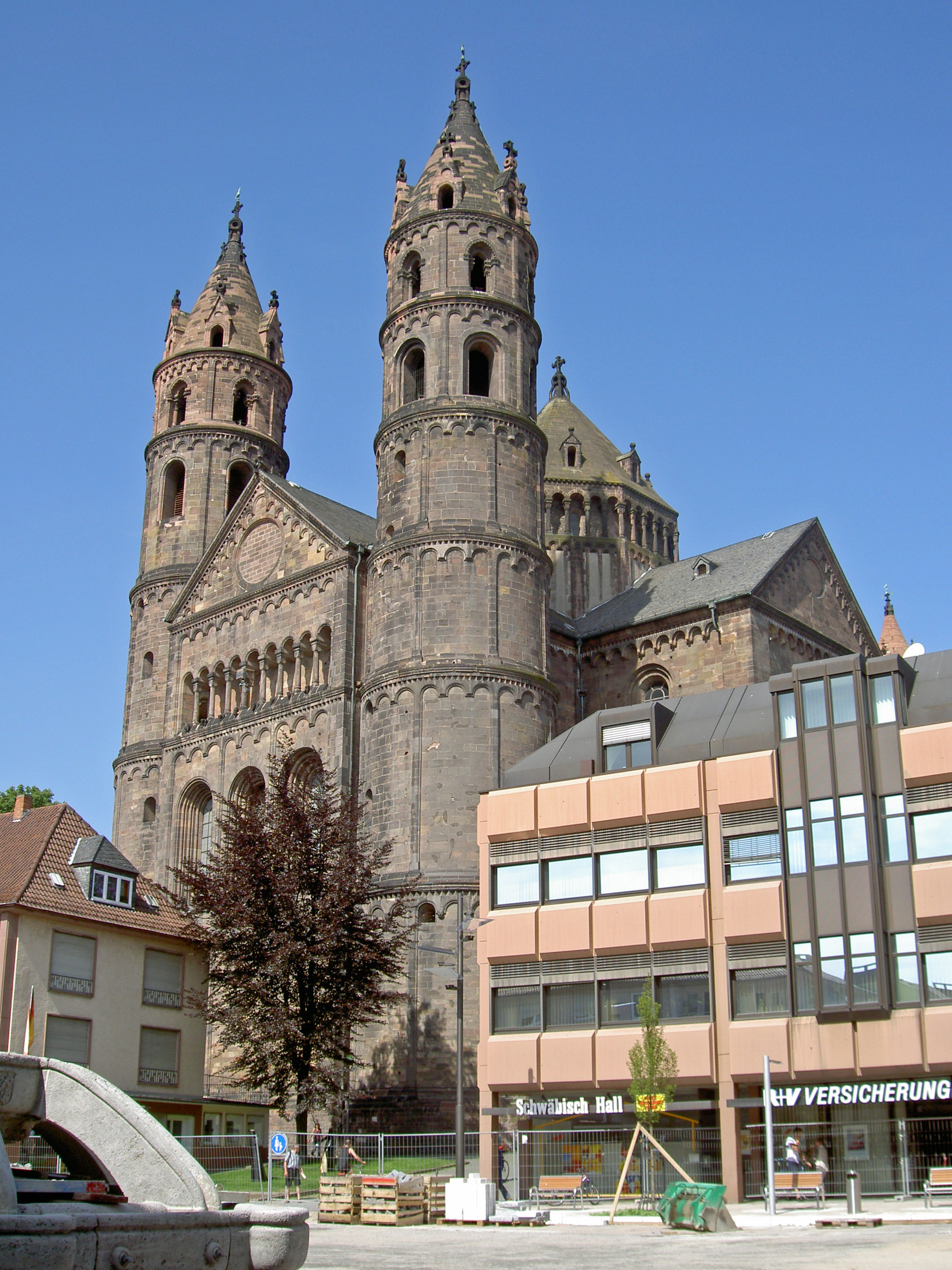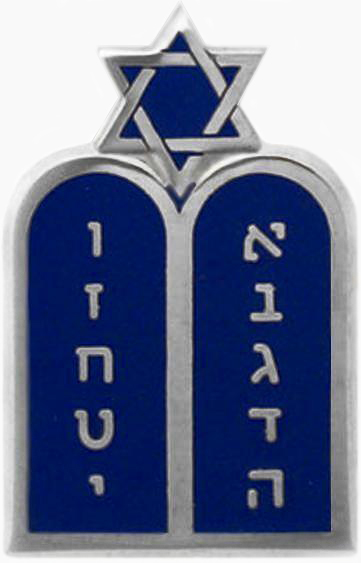|
Isaac Ben Jacob Ha-Laban
Rabbi Isaac ben Jacob or Yitzhak ben Yaakov, nicknamed ''"ha-Lavan"'' or "the white" was a 12th-century rabbi of Bohemia. He was a Tosafist and liturgical poet who flourished at Prague in the late 12th century. He was the brother of the renowned traveler Petachiah of Regensburg. He was among the earliest of the tosafists ("ba'ale tosafot yeshanim"), a contemporary of Rabbi Eleazar of Metz, and a pupil of Rabbenu Tam. According to Recanati, Isaac directed the yeshivah of Ratisbon. He also lived at Worms for a time. Isaac is mentioned frequently in the Tosafot, and Isaac ben Moses, in his ''Or Zarua'', No. 739, quotes Isaac ben Jacob's commentary on Ketubot, a manuscript of which exists in the Munich Library (No. 317). He is also mentioned in a commentary to the Pentateuch written in the first half of the 13th century. There is a piyyuṭ signed "Isaac b. Jacob," whom Zunz"Litcraturgesch." p. 313 supposes to be Isaac ben Jacob ha-Lavan. References * Its bibliography: *Az ... [...More Info...] [...Related Items...] OR: [Wikipedia] [Google] [Baidu] |
Nickname
A nickname is a substitute for the proper name of a familiar person, place or thing. Commonly used to express affection, a form of endearment, and sometimes amusement, it can also be used to express defamation of character. As a concept, it is distinct from both pseudonym and stage name, and also from a title (for example, City of Fountains), although there may be overlap in these concepts. Etymology The compound word ''ekename'', literally meaning "additional name", was attested as early as 1303. This word was derived from the Old English phrase ''eac'' "also", related to ''eacian'' "to increase". By the 15th century, the rebracketing, misdivision of the syllables of the phrase "an ekename" led to its rephrasing as "a nekename". Though the spelling has changed, the pronunciation and meaning of the word have remained relatively stable ever since. Conventions in various languages English nicknames are generally represented in quotes between the bearer's first and last name ... [...More Info...] [...Related Items...] OR: [Wikipedia] [Google] [Baidu] |
Isaac Ben Moses Of Vienna
__NOTOC__ Isaac ben Moses of Vienna, also called Isaac Or Zarua or the Riaz, was among the greatest rabbis of the Middle Ages. He was probably born in Bohemia and lived between 1200 and 1270. He attained his fame in Vienna and his major work, the halachic guide known as the ''Or Zarua'', was very popular among Ashkenazic Jewry. He was a member of the Chassidei Ashkenaz and studied under many scholars, including the Ra'avyah, Rabbi Yehudah HaChasid, the Sar mi'Kutzi and Rabbi Elazar Rokeach. He was among the teachers of Rabbi Meir of Rothenburg. Life In his ''Or Zarua'', the only primary source of information on his life, he mentions two Bohemian scholars as his teachers, Jacob ha-Laban and Isaac ben Jacob ha-Laban. Led by a thirst for Talmudic knowledge, he undertook in his youth extensive journeys to the prominent '' yeshivot'' of Germany and France. According to Gross he went to Ratisbon first; but S.N. Bernstein conjectures that previously he stopped for a lo ... [...More Info...] [...Related Items...] OR: [Wikipedia] [Google] [Baidu] |
Rabbis From Prague
A rabbi () is a spiritual leader or religious teacher in Judaism. One becomes a rabbi by being ordained by another rabbi – known as ''semikha'' – following a course of study of Jewish history and texts such as the Talmud. The basic form of the rabbi developed in the Pharisaic (167 BCE–73 CE) and Talmudic (70–640 CE) eras, when learned teachers assembled to codify Judaism's written and oral laws. The title "rabbi" was first used in the first century CE. In more recent centuries, the duties of a rabbi became increasingly influenced by the duties of the Protestant Christian minister, hence the title "pulpit rabbis", and in 19th-century Germany and the United States rabbinic activities including sermons, pastoral counseling, and representing the community to the outside, all increased in importance. Within the various Jewish denominations, there are different requirements for rabbinic ordination, and differences in opinion regarding who is recognized as a rabbi. For exam ... [...More Info...] [...Related Items...] OR: [Wikipedia] [Google] [Baidu] |
Samuel Joseph Fuenn
Samuel Joseph Fuenn (; 15 October 1818 – 11 January 1891), also known as Rashi Fuenn () and Rashif (), was a Lithuanian Hebrew writer, scholar, printer, and editor. He was a leading figure of the eastern European Haskalah, and an early member of Ḥovevei Zion. Biography Fuenn was born in Vilna, Russian Empire, the son of merchant and Torah scholar Yitsḥak Aizik Fuenn of Grodno. Though he received a traditional religious education until the age of 17, he also acquired an extensive general knowledge of German literature and other secular subjects, and became proficient in Russian, French, Latin, Polish, and English. He afterwards joined Vilna's circle of young '' maskilim''. In 1848 the government appointed him teacher of Hebrew and Jewish history in the newly founded rabbinical school of Vilna. Fuenn filled this position with great distinction till 1856, when he resigned. The government then appointed him superintendent of the Jewish public schools in the district of ... [...More Info...] [...Related Items...] OR: [Wikipedia] [Google] [Baidu] |
Heimann Joseph Michael
Heimann (Hayyim) Michael (April 12, 1792 – June 10, 1846) was a Hebrew bibliographer born at Hamburg. He showed great acuteness of mind in early childhood, had a phenomenal memory, and was an indefatigable student. He studied Talmudics and received private instruction in all the branches of a regular school education. He was a born bibliophile, and began to collect valuable works when still a boy of twelve. With his progress in Hebrew literature his love for books increased also, the result of which was his magnificent library of 862 manuscripts and 5,471 printed works, covering all branches of Hebrew literature. There were few books in his collection which he had not read, and he undertook the preparation of a full catalog of it. As far as he accomplished this task, it was the foundation of the ''Ozerot Hayyim, Katalog der Michael'schen Bibliothek'', Hamburg, 1848. Michael took an interest not only in Jewish literature, but in all the intellectual movements of the day, as is ... [...More Info...] [...Related Items...] OR: [Wikipedia] [Google] [Baidu] |
Piyyuṭ
A ''piyyut'' or ''piyut'' (plural piyyutim or piyutim, he, פִּיּוּטִים / פיוטים, פִּיּוּט / פיוט ; from Greek ποιητής ''poiētḗs'' "poet") is a Jewish liturgical poem, usually designated to be sung, chanted, or recited during religious services. ''Piyyutim'' have been written since Temple times. Most ''piyyutim'' are in Hebrew or Aramaic, and most follow some poetic scheme, such as an acrostic following the order of the Hebrew alphabet or spelling out the name of the author. Many ''piyyutim'' are familiar to regular attendees of synagogue services. For example, the best-known ''piyyut'' may be ''Adon Olam'' ("Master of the World"). Its poetic form consists of a repeated rhythmic pattern of short-long-long-long (the so-called hazaj meter), and it is so beloved that it is often sung at the conclusion of many synagogue services, after the ritual nightly recitation of the Shema, and during the morning ritual of putting on tefillin phylacte ... [...More Info...] [...Related Items...] OR: [Wikipedia] [Google] [Baidu] |
Pentateuch
The Torah (; hbo, ''Tōrā'', "Instruction", "Teaching" or "Law") is the compilation of the first five books of the Hebrew Bible, namely the books of Genesis, Exodus, Leviticus, Numbers and Deuteronomy. In that sense, Torah means the same as Pentateuch or the Five Books of Moses. It is also known in the Jewish tradition as the Written Torah (, ). If meant for liturgic purposes, it takes the form of a Torah scroll (''Sefer Torah''). If in bound book form, it is called '' Chumash'', and is usually printed with the rabbinic commentaries (). At times, however, the word ''Torah'' can also be used as a synonym for the whole of the Hebrew Bible or Tanakh, in which sense it includes not only the first five, but all 24 books of the Hebrew Bible. Finally, Torah can even mean the totality of Jewish teaching, culture, and practice, whether derived from biblical texts or later rabbinic writings. The latter is often known as the Oral Torah. Representing the core of the Jewish spi ... [...More Info...] [...Related Items...] OR: [Wikipedia] [Google] [Baidu] |
Ketubot
A ketubah (; he, כְּתוּבָּה) is a Jewish marriage contract. It is considered an integral part of a traditional Jewish marriage, and outlines the rights and responsibilities of the groom, in relation to the bride. In modern practice, the ''ketubah'' has no agreed monetary value, and is seldom enforced by civil courts, except in Israel. History According to the Babylonian Talmud, the ''ketubah'' was enacted by Simeon ben Shetach so that it might not be a light thing for a man to divorce his wife. The enactment provides for a man's wife to receive a fixed sum of money, usually accruing from his property, in the event of his divorcing her or of his predeceasing her. Thirteenth-century rabbi, Aharon HaLevi, adds a different reason, writing: "Of the logic behind this one commandment, e findthat the Torah has commanded us to perform an act before taking a wife, a matter that is intended to show that they are a couple united in wedlock before he lies down with her carnally, ... [...More Info...] [...Related Items...] OR: [Wikipedia] [Google] [Baidu] |
Worms, Germany
Worms () is a city in Rhineland-Palatinate, Germany, situated on the Upper Rhine about south-southwest of Frankfurt am Main. It had about 82,000 inhabitants . A pre-Roman foundation, Worms is one of the oldest cities in northern Europe. It was the capital of the Kingdom of the Burgundians in the early fifth century, hence is the scene of the medieval legends referring to this period, notably the first part of the ''Nibelungenlied''. Worms has been a Roman Catholic bishopric since at least 614, and was an important palatinate of Charlemagne. Worms Cathedral is one of the imperial cathedrals and among the finest examples of Romanesque architecture in Germany. Worms prospered in the High Middle Ages as an imperial free city. Among more than a hundred imperial diets held at Worms, the Diet of 1521 (commonly known as ''the'' Diet of Worms) ended with the Edict of Worms, in which Martin Luther was declared a heretic. Worms is also one of the historical ShUM-cities as a cultur ... [...More Info...] [...Related Items...] OR: [Wikipedia] [Google] [Baidu] |
Rabbi
A rabbi () is a spiritual leader or religious teacher in Judaism. One becomes a rabbi by being ordained by another rabbi – known as ''semikha'' – following a course of study of Jewish history and texts such as the Talmud. The basic form of the rabbi developed in the Pharisees, Pharisaic (167 BCE–73 CE) and Talmudic (70–640 CE) eras, when learned teachers assembled to codify Judaism's written and oral laws. The title "rabbi" was first used in the first century CE. In more recent centuries, the duties of a rabbi became increasingly influenced by the duties of the Clergy, Protestant Christian minister, hence the title "pulpit rabbis", and in 19th-century Germany and the United States rabbinic activities including sermons, pastoral counseling, and representing the community to the outside, all increased in importance. Within the various Jewish denominations, there are different requirements for rabbinic ordination, and differences in opinion regarding who is recognized as ... [...More Info...] [...Related Items...] OR: [Wikipedia] [Google] [Baidu] |
Solomon Luria
Solomon Luria (1510 – November 7, 1573) ( he, שלמה לוריא) was one of the great Ashkenazic ''poskim'' (decisors of Jewish law) and teachers of his time. He is known for his work of Halakha, ''Yam Shel Shlomo'', and his Talmudic commentary ''Chochmat Shlomo''. Luria is also referred to as “''Maharshal''” (Hebrew abbreviation: Our Teacher, Rabbi Solomon Luria), or “''Rashal''” (Hebrew abbreviation: Rabbi Solomon Luria). Biography Luria was born in the city of Poznań (Posen), in the Kingdom of Poland. His father, Yechiel Luria, was the rabbi of the Lithuanian city of Slutzk and the son of the eminent Talmudist Miriam Luria. The Luria family claims descent from Rashi.For Solomon's descent and relatives see Anton Lourié, Die Familie Lourié. Vienna: Stern & Steiner, 1923. Luria studied in Lublin under Rabbi Shalom Shachna, and later in the Ostroh yeshiva under Kalonymus Haberkasten; he later married Lipka, daughter of Rabbi Kalonymus. Students in the yeshi ... [...More Info...] [...Related Items...] OR: [Wikipedia] [Google] [Baidu] |
Rabbenu Tam
Jacob ben Meir (1100 – 9 June 1171 (4 Tammuz)), best known as Rabbeinu Tam ( he, רבינו תם), was one of the most renowned Ashkenazi Jewish rabbis and leading French Tosafists, a leading ''halakhic'' authority in his generation, and a grandson of Rashi. Known as "Rabbeinu" (our teacher), he acquired the Hebrew suffix "Tam" meaning straightforward; it was originally used in the Book of Genesis to describe his biblical namesake, Jacob. Biography Jacob ben Meir was born in the French country village of Ramerupt, today in the Aube département of northern-central France, to Meir ben Shmuel and Yocheved, daughter of Rashi. His primary teachers were his father and his brother, Shmuel ben Meir, known as Rashbam. His other brothers were Isaac, known as the Rivam, and Solomon the Grammarian. He married Miriam, the sister of Rabbi Shimshon ben Yosef of Falaise, Calvados, who may have been his second wife. His reputation as a legal scholar spread far beyond France. Avraham ibn ... [...More Info...] [...Related Items...] OR: [Wikipedia] [Google] [Baidu] |






